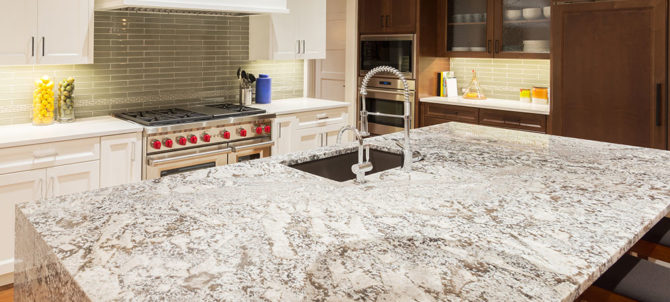
If you don’t like the current look of your old bathroom or kitchen countertops and you don’t want to replace them, one of the ways to improve their look is by covering them.
How do you cover old countertops? Well, there are plenty of ways to go about it. Some of these ways include:
Place tiles over the countertops
Tiles are popular with covering floors, walls, and showers, but there is no reason you can’t use them to cover your old countertops.
While there are many types of tiles you can use, the best ones to go with are grazed ceramic and porcelain tiles. They are stain and heat-resistant. They also come in a variety of sizes, shapes, and colors, so you have plenty of options to choose from.
Install the tiles directly on top of the old counters, provided they are flat and stable enough to not crack. If you have strong counters that can accommodate thicker tiles, start with a layer of ¼-inch cement board glued to the countertop, then lay the tile over it.
While tiles are extremely durable and easy to clean, they have grout joints prone to staining and collecting grime.
Thankfully, you can prevent them from coming about. One of the things to do is to seal the grout as soon as possible after installing the tile then reapply the sealer every few years.
Lay laminate over the countertop
If you have old laminate countertops with square edges, you can cover them with a layer of new laminate sold in sheets of up to 12 feet long and 5 feet wide.
If your laminate countertops have a waterfall edge, don’t cover them with laminate as it’s hard to get the new material to conform to the edge contours.
Covering the old countertops with laminate involves cutting the laminate sheets a little oversize and then gluing them with contact cement. You then trim the edges flush to the old counter with a laminate trimmer or router, and you have your new countertops.
Install modular granite
Sometimes known as granite or stone overlay, modular granite is a system of small, thin slabs of stone specially designed to cover old, beat-up countertops.
Instead of the standard 12-inch square stone tiles, and their many grout joints, modular pieces cover the entire front-to-back distance of the countertop.
The modular pieces are usually 16-18 inches wide, which means that they have fewer joints. As you can guess, this reduces the weak lines, reducing the chances of the countertops breaking.
Use a countertop refinishing kit.
Countertop refinishing kits are like paint on steroids. These kits usually include epoxy-like paint and decorative stone chips that look like a natural stones.
Refinishing kits come with everything you need to cover a standard-size countertop completely. From the front edge to the 4-inch backsplash, the countertop kit will help you cover it.
Although the installation process is straightforward and non-technical, it involves plenty of hard work, messy sanding, and careful attention to detail.
For the best outcome, follow the manufacturer’s instructions to the letter.
Cover the countertops with a countertop film
A countertop film is a thicker, tougher version of contact paper with the self-adhesive backing sticking directly to the old countertop surface.
Although installing the countertop film is a little fussy, it’s not as complicated as applying contact paper, so you can easily do it even without the help of a professional.
To undertake the installation, layout the film, then trim it to rough size and align it to the countertop edges. Stick it down incrementally using a squeegee tool to remove all the bubbles that might be present.
Spray paint the countertop
The beauty of spray painting the countertop is that it’s fast and, at the same time, produces a smooth fish that brush or roller painting can’t match.
While spray painting is a highly effective way to cover the countertops, you should note that it doesn’t work on all surfaces—it often works on laminate countertops and other surfaces that can be scuffed down with sandpaper.
When choosing the paint, granite countertop installers Durham recommend you go for matte finish spray paint as glossy paint shows scratches.